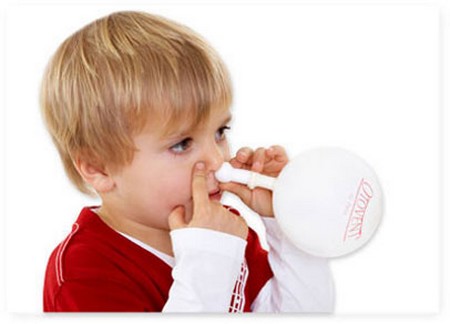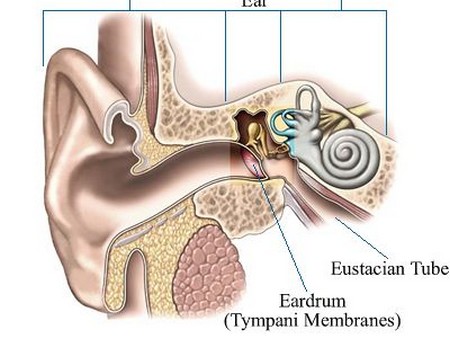Glue ear is quite common in children and occurs when fluid accumulates in the middle ear cavity, usually when there is catarrh, associated with a viral infection such as a cold, tonsillitis or enlarged adenoids. The Eustachian tube, which runs from the ear to the throat, becomes blocked, so the fluid is unable to drain away. Eventually, pressure may lead the ear drum to burst. Both ears tend to be affected and the blockage affects the sound vibrations, leading to impaired hearing. This can sometimes go undetected and the child begins to have trouble hearing at school, which may lead to inattention, and both teachers and parents can wrongly believe the child is being difficult or unresponsive.
What you can do
It is thought there may be a connection between children who are bottlefed and glue ear, as the action of breastfeeding exercises the muscle that helps to open the Eustachian tube, which bottlefeeding does not do.
If your child is showing signs of irritability or vagueness when listening to you, or teachers complain of sudden inattentiveness at school, check whether your child may have an ear blockage. If you think your child has hearing problems, consult a doctor or practitioner as soon as possible. Early detection may mean avoiding more serious treatment, such as the insertion of grommets – small plastic tubes – which are placed in the ear by an ear, nose and throat specialist under general anaesthetic, allowing the mucus to drain away. These fall out once the problem has cleared up or are removed. Underlying causes such as adenoids or tonsils may need to be removed to prevent persistent recurrences.
It’s better not to let babies have bottles while lying down, as this increases the risk of fluid draining into the ear and then becoming infected. Try to always hold and support a feeding child.
Treatment
Herbal medicine
Echinacea, Wild Indigo and Elderflower will help to halt the infection, improve the child’s immune system and help dry up the mucus. If the eardrum hasn’t burst, infused oils of Hypericum mixed with a few drops of Eucalyptus may help reduce the inflammation.
Naturopathy
The child’s diet will be analysed and as allergy to dairy produce, wheat or soya may increase the amount of mucus produced, these may need to be avoided and substituted. Eating garlic, onions and chillies may help to reduce mucus. Mullein oil may be prescribed to ease congestion. Mineral salts may be given, to help support the system, such as potassium chloride or calcium and sodium phosphate. If your child has had antibiotics, the immune system needs to be built up with vitamins A, C and E. The supplements acidophilus and bifidus may also be recommended.
Osteopathy
Osteopaths believe that if there is some sort of restriction in the cranial or spinal area, perhaps due to a long-forgotten fall or accident, then there can be an imbalance of pressure between the outer and middle ear, leading to a buildup of fluid. This can affect the tension in the eardrum and result in a loss of hearing – a sign of glue ear. Work will involve releasing tension in the relevant areas of the cranium or spine.
Acupuncture
Western medicine tends to treat glue ear by draining the fluid and may involve an operation to insert grommets to help this process. Acupuncture will try to treat the cause to stop the build-up of fluid occurring in the first place. An acupuncturist will see the problem as an imbalance of heat, damp and congestion. The condition may worsen for the first four or five treatments, as it is designed to break up the phlegm in the head and body and get it to ‘move out’. As well as acupuncture, the practitioner may advise avoiding dairy products, as these can exacerbate the damp, spicy foods, as these create heat, and flour as this helps to promote congestion.
Other therapies that may be beneficial: reflexology, aromatherapy, chiropractic.

